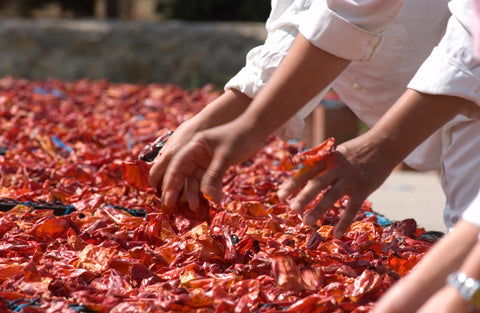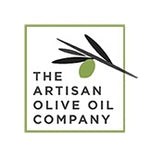Where does harissa paste come from?
The word harissa comes from the arabic word "هرس" which refers to the pounding or crushing of sun-dried peppers which is its main ingredient. They are typically mixed with garlic, caraway seeds, cumin, salt, sun-dried tomatoes and extra virgin olive oil. Some recipes also include dried mint.

Peppers arrived in Tunisia in the 16th century during the Spanish occupation and quickly become a key ingredient in its cuisine. Today, harissa can be found all over the world and has been fully adopted as a condiment from Europe, the Middle East to the United States. Prestigious chefs such as Yoram Ottolenghi often uses it his original recipes, showcasing the diversity of the South Mediterranean cuisine.
What are the different types of harissa?
Many harissa recipes have developed over the years. We currently carry three different versions produced by Moulins Mahjoub, our partner from Tunisia in the North of Tunisia. Our organic Tunisian harissa paste is our best-sellers, it is the spiciest of the range and contains 80% baklouti peppers, a particularly hot chili pepper variety. It is very versatile for sandwiches, sauces, stews, soups, fish and meat dishes but given its strength it should be used in moderation. The traditional harissa, is the typical Berber recipe, it has a slightly smoked flavour, a medium spiciness, which makes it ideal for roasts and vegetables. Our mildest one is the sweet pepper harissa and can be used as an anti-pasti, together with pasta or on toasted bread. We have also recently launched a new mild harissa with lemon & capers.
Our harissa can be bought on our website, and in some of the UK's best fine food and organic stores such as Planet Organic in London, Dugard and Daughters in Ensfield or Infinity stores and bakery in Brighton.

